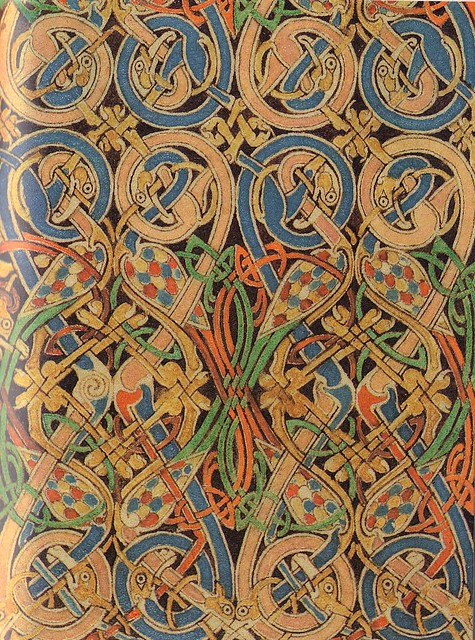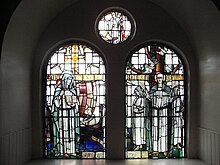Finally, in the days of the Cambro-Normans there arose a second Columbanus. In his biography of his friend, Malachy, St. Bernard of Clairvaux wrote of Malachy’s attempts to revive the Church of Bangor. Mael Maedoc was born at Armagh in 1095 and ordained in 1119. On coming to Bangor as an Abbot in 1124 he took the name of Malachias, the Hebrew for “My Angel” and this was undoubtedly taken because of the tradition of Bangor being known as the “Valley of the Angels.”
In 1127 the monastery was attacked by Conor O’Loughlin, king of the “northern Ui Neill”, and the “the city was destroyed.” Malachy was forced to migrate south with his monks and he set up a new community in County Kerry under the protection of his old friend, Cormac McCarthy, king of Desmond. In 1134 he was called back to Ulster to become Archbishop of Armagh and in 1137 he at length returned to his beloved Bangor. Two years later, following a journey to Rome he was made Papal Legate and built a great oratory of stone in Bangor on returning there.
Malachy’s influence in Irish ecclesiastical affairs was immense and has been compared to that of Boniface in Germany. He restored the discipline of the Church which had grown lax and had the Roman liturgy adopted. In 1148 he set out once more for Rome but, whilst staying at Clairvaux, died in the arms of St. Bernard on All Saints Day 1148. Of this Bernard wrote “Malachy, Bishop and Legate of the Holy Apostolic see, as if he had been taken up out of our hands by angels, happily fell asleep in the Lord in the fifty-fourth year of his life in the place and at the time he had chosen and foretold.”
Bishop Reeves has written that Malachy’s foundation at Bangor “like the second temple fell very far short of its primitive greatness, and in the process of time, under civil commotions, dwindled into insignificance and finally became but a name.” As for the Bangor Antiphonary it remained at the monastery of Bobbio whence with the Bobbio Missal and other Irish books it was moved to Milan by Cardinal Frederick Borromaeo when he founded the Ambrosian library there. So today there is preserved in Milan a reminder of those Days of Glory when the Laus Perennis was sung in Ireland and Bangor the Great was the Light of the World.
And of Malachy we also have a reminder of his influence in the beautiful St Malachy’s Church in Belfast, which was to have been the Cathedral Church of Down and Connor until funds were diverted to the destitute following the Great Famine. My friend Pat Mc Carthy, SDLP former Lord Mayor of Belfast recently brought me to see the plaque there to soldiers of the First World War and another friend Dennis Maloney has helped the church considerably. Finally I have also been particularly fond of St Malachy’s College, of which I was the school doctor for many years, where the memory of the great saint, the first Irish one to have been canonised by a pope, lives on.
As for the alleged prophecies of Saint Malachy,these were actually first published in 1595 by a Benedictine named Arnold Wion in his Lignum Vitæ, a history of the Benedictine order. Wion attributed the prophecies to Malachy of Armagh. He explained that the prophecies had not, to his knowledge, ever been printed before, but that many were eager to see them. Wion includes both the alleged original prophecies, consisting of short, cryptic Latin phrases, as well as an interpretation applying the statements to historical popes up to Urban VII (pope for thirteen days in 1590), which Wion attributes to Alphonsus Ciacconius. In this scheme the present Pope Francis is Peter of Rome, the last pope.
To be continued
© Pretani Associates 2014















